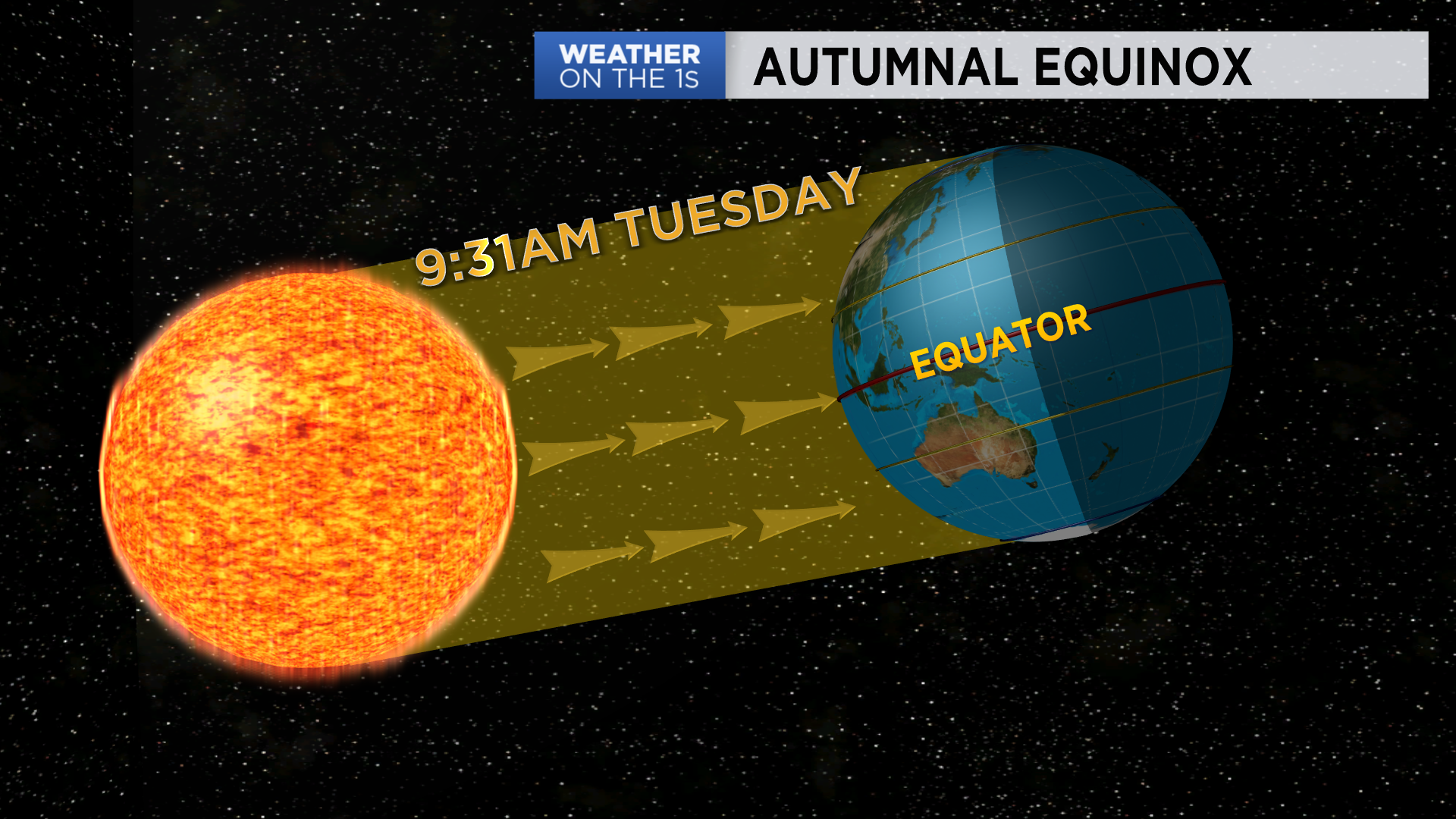On the autumnal (or fall) equinox, we should see 12 hours of day and 12 hours of night, right?
But, that's not exactly how it works. Here's why.
Let’s start with a quick astronomy lesson: The earth spins around on its axis approximately once every 24 hours, and it orbits the sun approximately once every 365 days. The earth is tilted on its axis at an angle of around 23.4 degrees.
So as the earth orbits the sun, one hemisphere (north or south) is angled more toward the sun than the other, and that hemisphere is enjoying summer. The equinoxes mark the two times of the year that the Earth’s poles are not tilted toward or away from the sun, and that the sun is directly above the equator.

But back to the original question: If the sun was a point source of light there wouldn’t be an issue here, but it is not, it’s a disk. We define sunrise as the moment the upper edge of the sun's disk becomes visible above the horizon and sunset as the moment the sun's upper edge disappears below the horizon.
So, the reference point is not the center of the sun. The time it takes for the sun to fully rise and set (several minutes) is added to the day and subtracted from the night, and therefore the equinox day lasts a little longer than 12 hours.
The second part of this has to do with the refraction of light by Earth’s atmosphere. Refraction is the bending of the light and it causes the sun’s upper edge to be visible from earth several minutes before the edge actually reaches the horizon.
The atmosphere acts like a prism, uplifting the sun about 0.5 degrees from its true position whenever the sun nears the horizon. Another interesting fact that only us science geeks can get into is that the sun’s angular diameter spans about 0.5 degrees, as well (that part won’t be on the test).
To sum it up, there are two factors explaining why we have more than 12 hours of daylight on the equinox. First, the sun is not a point of light, it’s a disk and the top of the disk is the reference point for both sunrise and sunset.
Second, the earth’s atmosphere refracts (or bends) sunlight. This adds up to give us more daylight on the autumnal equinox.



